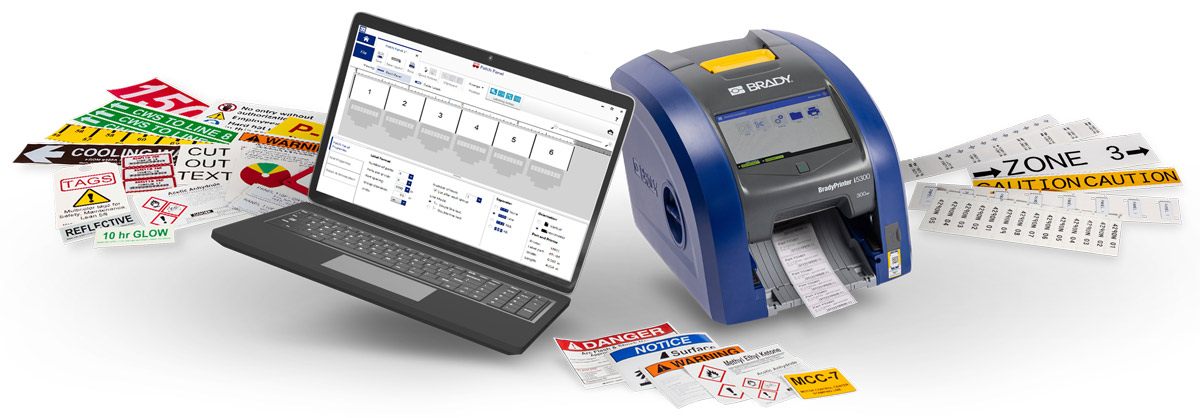Barcode Generator
Generate FREE Barcodes
Use Brady’s free barcode generator to create a variety of barcode types: linear, 2D codes, GS1 2D codes, GS1 databar, EAN/UPC, postal codes, etc. Simply input your data, select your barcode type and generate high-quality codes for immediate use.
And since a barcode is only as good as the system behind it, Brady provides a full, end-to-end solution that starts with our free generator, and ends with a wide range of durable labels, reliable printers and high-performance scanners. Find everything you need to create an integrated identification system.
Confused about which barcode to choose? See our guide to different barcode types to learn more.
Step 1: Select a barcode type
-
 Linear Codes
Linear Codes
-
 2D Codes
2D Codes
-
 GS1 2D Codes
GS1 2D Codes
-
 GS1 Databar
GS1 Databar
-
 EAN / UPC
EAN / UPC
-
 Postal Codes
Postal Codes
Step 2: Configure your barcode
This content will be visible on your barcode
Step 3: Download your barcode
Advanced Barcode Generation Software
Go beyond simple barcode creation with software that provides powerful tools for advanced label management.
Brady Workstation: This modular software platform offers advanced barcode options and allows you to integrate with existing data systems for automated, large-scale label creation.
Express Labels Mobile: Create and print barcodes directly from your smartphone or tablet with this app, perfect for professionals who need to work on the go.


Linear Codes
Also known as 1D barcodes, linear codes are a series of parallel lines used to encode basic data like a product number.
- Best for: small data sets like serial or part numbers
- Not compatible with: complex information like images or URLs — for that, you’d need a 2D barcode
Brady solution: Learn more about the difference between 1D and 2D barcodes, then pick the best material for your application.

2D Codes
Two-dimensional codes use patterns of squares, dots or other shapes to encode data both horizontally and vertically.
- Best for: large, complex data sets including images, URLs and long strings of text
- Not compatible with: very basic product ID where a simple number is sufficient
Brady solution: Easily generate and print complex 2D codes with Brady Workstation software and barcode label printers.

GS1 2D Codes
Also known as 2D codes, these follow global GS1 standards, making them universally compatible for seamless supply chain communication.
- Best for: standardized supply chain applications with multiple data points like batch number, expiration and serial number
- Not compatible with: internal tracking or applications that don't require the strict, standardized data format of the GS1 system
Brady solution: Learn more about barcode standards and ensure seamless global traceability with our line of industrial scanners.

GS1 DataBar
A type of linear (1D) barcode, often smaller than traditional barcodes, that can encode more information.
- Best for: small products with a variable weight, price or expiration date — like fresh produce
- Not compatible with: general retail checkout scanning, which relies on larger, more traditional barcodes like UPC/EAN
Brady solution: Find small, durable labels to print space-saving barcodes on even the smallest items.

EAN/UPC Codes
These are the standard linear (1D) barcodes used for retail product identification globally.
- Best for: retail checkout and general product identification with a unique 12- or 13-digit number that links to a specific product and price in a store's database
- Not compatible with: applications requiring more data than a product number, such as batch numbers, expiration dates or URLs
Brady solution: Find a variety of durable label materials suitable for packaging and product identification.

Postal Codes
Also known as ZIP codes in the US, postal codes are a series of alphanumeric characters used by postal services to sort and route mail to specific geographic locations.
- Best for: addressing and routing packages, envelopes and mail
- Not compatible with: product-level identification — postal codes aren’t designed to track specific items, store inventory data or include details like serial numbers or expiration dates
Brady solution: Print high-volume shipping labels with postal codes using our benchtop label printers designed for seamless logistics.
